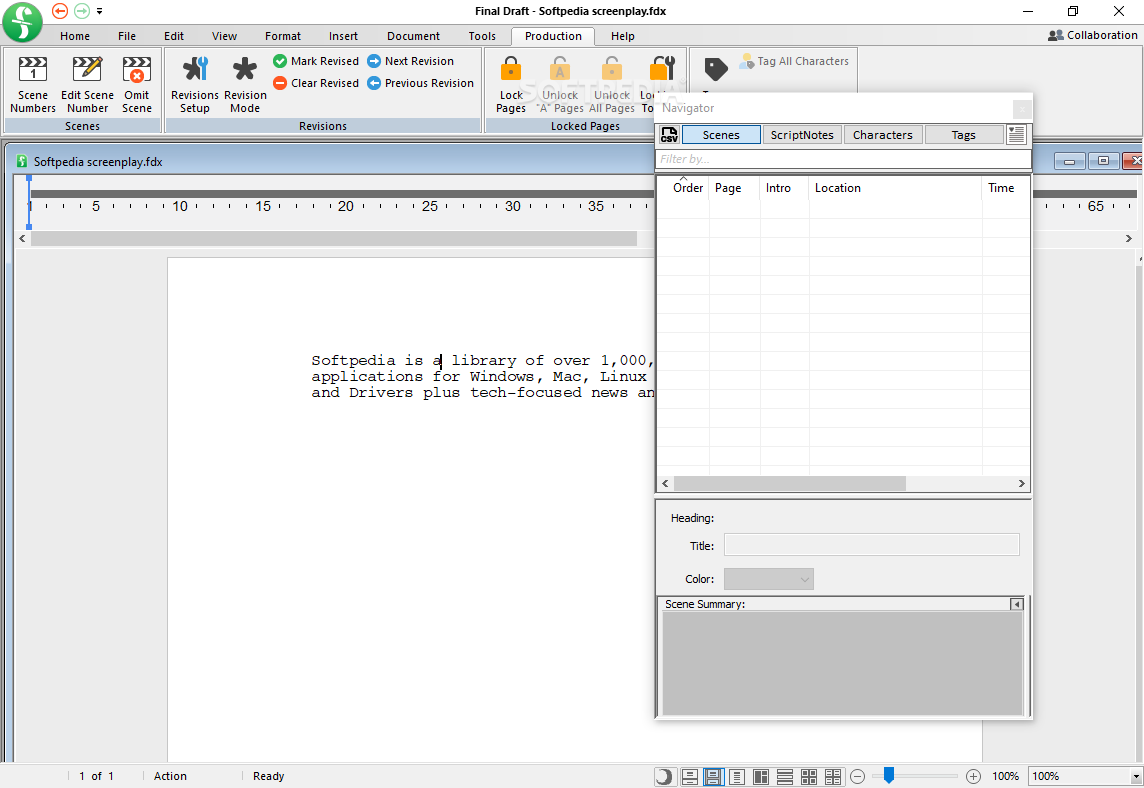
If you’re already using Final Draft you’ll be familiar with how use it to jump to, drag, rearrange and colour-code scenes. This tabbed panel is not new - it’s been part of Final Draft for the past 3-4 versions at least, but its utility has been improved.

I’ll confine myself to the meta-script aspects and the new and improved pre-scripting tools. In this review I’ll assume that the script formatting aspect of Final Draft needs no explanation or comment. (Declaration of interest: I’ve been a voluntary beta tester on Final Draft 10 for the past 18 months, but I have no financial interest in the software.)
#Final draft 10 upgrade software#
Pre-scripting is by definition a messy job with lots of redundancy.įinal Draft 10 aims to pull the whole process together into a single software package. There are a few computer applications that can help you with this early stage. You will have laid out the main beats and arcs and possibly covered your wall with scrawled library cards before you type EXT. You will have refined your logline, described the inciting incident, and developed a 3-act structure. If you follow The Story Department’s advice, and have visited Logline It, you know the drill. If you believe the hype, it is “used by 95% of film and television productions.”īut for most of us, writing a screenplay begins long before we sit down at the keyboard with that real or virtual clean sheet in front of us. They’ll check your spelling, allow you to classify and rearrange scenes, and produce shooting scripts and script reports for your production team.įinal Draft™ has fought its way to the top in the screenplay formatting wars. They also remember the names of your characters and scene locations.
#Final draft 10 upgrade movie#
These take the hassle out of capitalising, indenting and laying out a script in the format demanded by the Hollywood movie moguls. If you are one of this talented few, script formatting applications like Celtx, Movie Magic and Final Draft are great productivity tools.

Longer term, it needs to be questioned whether these animals fit the system you are trying to implement and whether the beef price and/or carcase weight in spring is going to be sufficient enough to justify bringing them through to slaughter out of the shed to leave a positive margin.How do you go about writing a screenplay? There are a few of us who sit down at the computer, like some modern day Dalton Trumbo at his trusty Remington, type FADE IN: and keep going until the cigarette packet is empty. Housing space on the demo farm allows for some finishing cattle to be wintered but on a farm where all housing is needed for this year’s stock, earlier housing for these breed types would be the best option.

The farm has proved this for the last three years and so, in future, instead of trying to finish as many cattle off grass as possible, it may be best to house these types of animals at an earlier date, increase the level of meal feeding to them and try to bring forward their slaughter date in this way.
#Final draft 10 upgrade plus#
The other difference is that due to the decent grass growth and ground conditions this back end, being able to keep cattle out for around 10 days longer this year, this most recent draft off grass is a bonus compared to 2020.ĭespite having a decent proportion of cattle drafted off grass, the late-maturing breed types continue to be an issue when it comes to achieving a sufficient level of finish off grass plus meal.

However, as reported before, this reduction in carcase weight is more than offset by the earlier slaughter date and savings in feed and labour. While the farm has drafted a greater number of cattle off grass this year, compared to last it has come at the expense of around 10kg of carcase weight. The drafting rate off grass this year is well up on the 2020 performance with 63% of heifers and 325 of bullocks being slaughtered off grass last year.


 0 kommentar(er)
0 kommentar(er)
